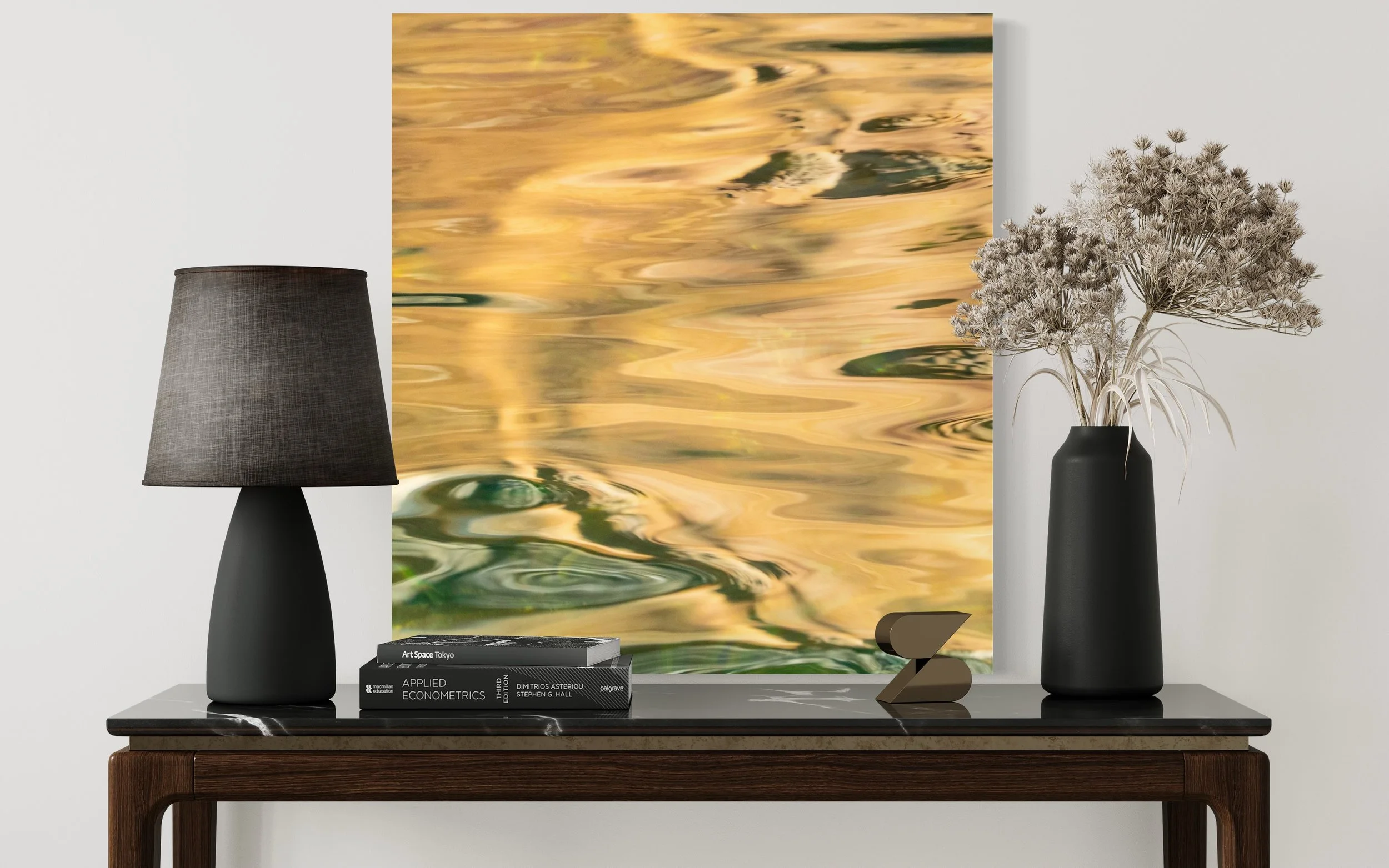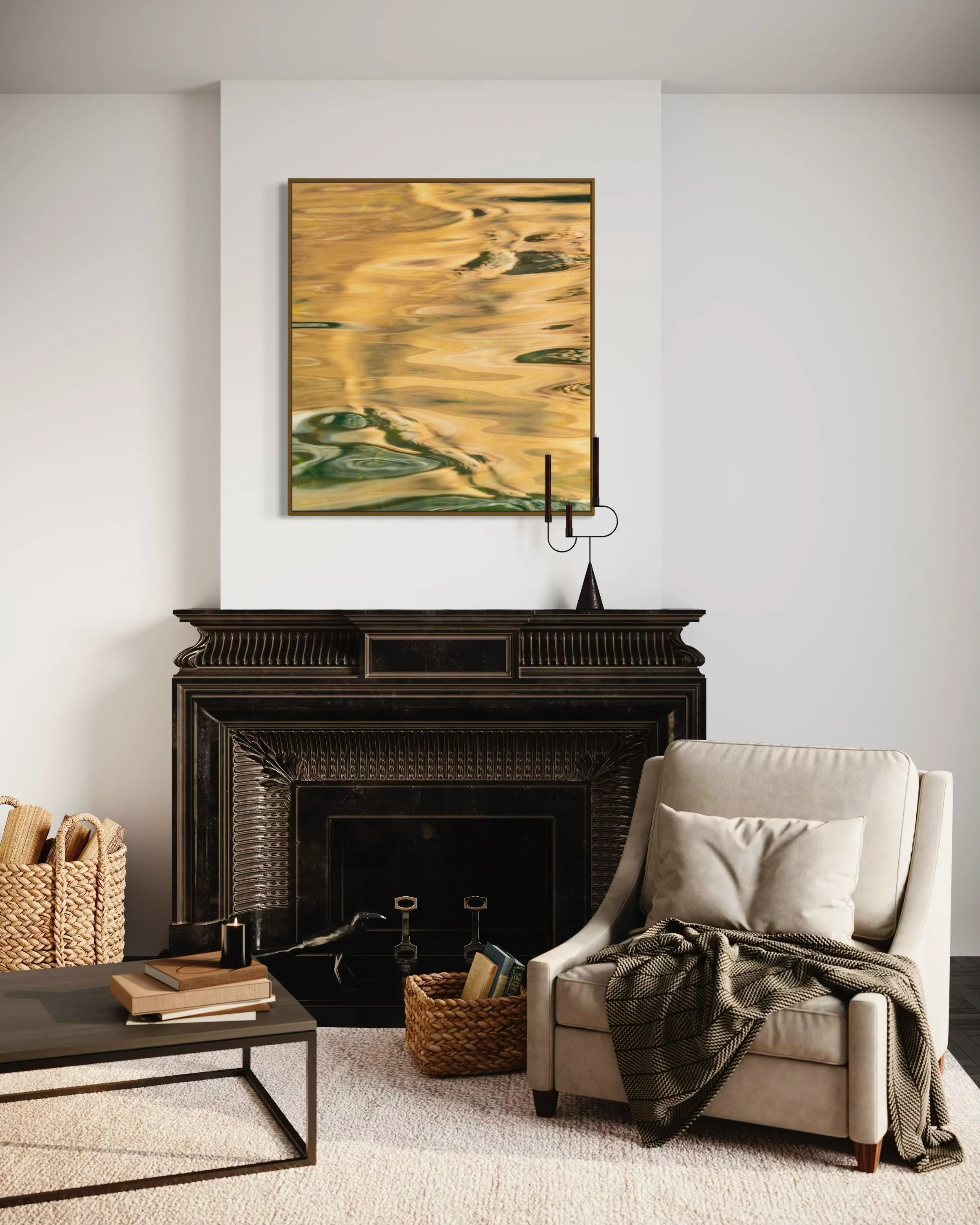Sandstone Drift — Gadigal Echoes Reflected in Sydney Sandstone
I keep returning to sandstone.
From my kayak, gliding across the quiet reaches of Middle Harbour, Sydney’s ancient yellow-ochre bedrock rises on every flank. Some mornings the rock appears solid and immovable; on others—especially when the tide slackens and the sun hangs low—it dissolves into molten ribbons on the water. That is when I lift the camera, set at f/8 to hold just enough depth, and trust the Harbour’s surface to paint with light faster than my paddle can disturb it.
The frame that became Sandstone Drift slipped into being on such a morning. Through the lens I watched whole cliff-faces loosen, liquefy and swirl, gold folding over muted greens like pages turned by wind. Hours later in the studio, scrolling through the raw takes, I realised the image carried more than visual surprise. It hummed with memory—yet not my own.
For years my Sand Talk Collection has traced a dialogue between water and rock, seeking affinities with Central Desert sand paintings while honouring the sandstone that underpins my coastal city. This new photograph felt different: it seemed to whisper in Gadigal voices, those of the First Nations people who paddled these coves long before Europeans carved the word “Sydney” onto maps. The Gadigal read the sandstone’s stories the way I now read a weather app—watching its colour and texture to gauge season, animal movement, shellfish cycles. Pale bands signalled hot time, dark seams hinted at cool changes. Every abrasion and fault line offered instruction on sustenance and ceremony.
I imagine a Gadigal fisher easing a nawi canoe across the same mirrored water, scanning the reflected cliffs for subtleties—the green tinge that means sea lettuce is abundant, the ochre blush heralding mud oyster fattening, the morning when sandstone flashes almost white and announces a shift in prevailing winds. My camera caught only an echo, yet in that echo I feel the ancestors drifting beside me, reading nature’s script while I read light.
Technically, Sandstone Drift is a photograph; emotionally, it is a palimpsest. The top layer is pure abstraction—fluid lines that might recall a Turner sky or a Rothko haze. Beneath lies 200 million years of compressed sand, filtered through the Harbour’s skin. Deeper still flow Gadigal pathways: their silent strokes across water, their seasonal calendars etched into rock. The image invites the viewer to hover at those thresholds—seeing, sensing, wondering what knowledge lives inside the shimmer.
Creating this work reminded me that my kayaking practice is less about “taking” photographs than about receiving them. I wait for the water to negotiate terms between sandstone, sun and lens, and when it does, I press the shutter out of gratitude. If the resulting print offers even a glimpse of the ancestral wisdom encoded in these reflective conversations, then the journey across Middle Harbour—and across time—has been worthwhile.
I invite you to spend a moment with Sandstone Drift, to let its currents guide you beyond the surface toward the deep continuity that binds rock, water, and human imagination.





